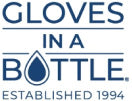Psoriasis on Hands, Feet and Nails
Individuals suffering from psoriasis on the hands and feet often experience cracking, swelling and blistering. Depending on the severity of the condition, there are several treatments that can relieve psoriasis in these areas. Minor lifestyle changes can also relieve some of the discomfort of hand, feet and nail psoriasis.
Treating Psoriasis on Hands and Feet
Acute flares of psoriasis on the hands and feet should be promptly and carefully treated. Traditionally, topical treatment of palm and sloe psoriasis have included tar, salicyclic acid and corticosteroids. Combinations of these three agents, rather than using them individually, seem to produce better results for individuals suffering from psoriasis on hands and feet. In recent years, many dermatologists have begun recommending the use of high quality shielding lotions alongside traditional treatments to curb some of the negative side effects of traditional psoriasis treatment. Another common treatment is calcipotriene, which can also effectively treat psoriasis on hands and feet. It is important to either use a good shielding lotion or wear protective gloves to keep the medicine from getting on sensitive parts of the body, such as the face or skin folds. A regimen that alternates calcipotriene and a strong topical corticosteroids may be helpful. In many cases, cracking, blistering and swelling accompanies flares. Consider using super glue to seal deep fissures. If you suspect you might have an allergy to super glue, you should do a patch test on your bicep first. If topical medications don’t work, your dermatologist may recommend methotrexate, cyclosporine or Soriatane (acitretin). Methotrexate can clear many cases of palm and sole psoriasis within four to six weeks. The risks of side effects from UV or phototherapy are reduced by combining low doses of oral retinoids with UVB or PUVA. The combination of low doses of oral retinoids with PUVA or UVB phototherapy is one of the most effective treatments available for palm and sole psoriasis. Special phototherapy units for palms and soles are widely available.
Pustular psoriasis on the Hands and Feet
It is common for doctors to prescribe a corticosteroid or coal tar as an initial topical treatment for pustular psoriasis. Phototherapy, oral retinoids and/or methotrexate may also be prescribed. Soriatane can also be a helpful long-term solution for pustular psoriasis. Biologic drugs may be prescribed for difficult cases
Nails
In up to 50 % of people with psoriasis and at least 80 % of people with psoriatic arthritis, nail changes will occur at some point. The most common nail problems are:
- Pitting—shallow or deep holes in the nail
- Deformation—alterations in the normal shape of the nail
- Thickening of the nail
- Onycholysis—separation of the nail from the nail bed
- Discoloration—unusual nail coloration, such as yellow-brown
Nail treatments
Because psoriasis affects the nail during formation, nail psoriasis is very challenging to treat. The nail bed is difficult to penetrate with topical medications. Corticosteroid injections into the nail bed have been used with varying degrees of success. In addition to topical treatments and phototherapy, other nail psoriasis treatments are available:
- Corticosteroid injections into each affected nail;
- Cosmetic repair including nail scraping and filing, nail polish, artificial nails and surgical removal.
Onychomycosis is a fungal infection that causes thickening of the nails and may be present with nail psoriasis. It is usually treated with systemic anti-fungal agents. About a third of people who have nail psoriasis also have a fungal infection.
Nail care
It is important to keep nails as short as possible. When nails become loose, they can become injured as they rub against surfaces. Nail trauma often triggers or worsens nail psoriasis, so it is important to keep your nails protected. Wearing gloves while working with your hands can reduce the risk of nail injury.
Additional Tips
While psoriasis on hands and feet, and psoriasis in general, cannot as of yet be cured, aside from standard treatments, there are steps you can take to drastically reduce the incidence of psoriatic outbreaks. Eating healthy, drinking plenty of water, getting regular exercise and using a shielding lotion like Gloves In A Bottle to keep the skin moisturized and protected from irritants and allergens can all contribute to less outbreaks and shorter recovery times.

